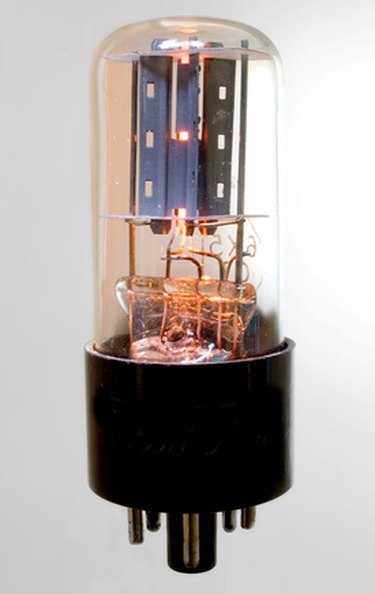
Cathode ray tubes perform one function, which makes them unique as transistors: They convert an incoming electronic signal into a stream of electrons which is designed to create a picture by reacting with a substance on a screen. Cathode ray tubes can be used to display mathematical information, as in the graph created by a heart rate monitor, or might be used in a monitor to transmit a recorded picture. As an imaging technology, cathode ray tubes are older but still very cost effective.
Function
Video of the Day
The cathode ray tube receives an electronic signal from a power source which causes the cathode, or negative electrode, to release a set of electrons corresponding to this signal which travel toward the anode, or positive electrode. These transmitted electrons travel to the anode in a vacuum, created through enclosure by a picture tube, and strike phosphor stripes which display a certain color according to the electron signal. This signal must be constantly refreshed, even if the color doesn't change, as the phosphor glows for less than a second.
Video of the Day
The larger picture is created through a process called deflection. The electron beam shot by the cathode sweeps horizontally across the screen to create the continuous picture visible on a CRT monitor.
Uses
Cathode ray tubes, or CRTs, have been applied in numerous pieces of imaging equipment because of their ability to produce a picture. Cathode ray tubes have long been used in both televisions and computer monitors. Besides their varied applications within the broad category of monitors, cathode ray tubes are also utilized in oscilloscopes, a piece of laboratory equipment which uses the deflection of electrons to measure voltage over different frequencies.
Potential
When compared against other imaging technologies, such as liquid crystal display (LCD) or plasma, CRTs are much less expensive, have faster response times to electronic signals and produce more accurate colors. However, as plasma and LCD grow more widespread, the cost to produce LCD or plasma monitors is greatly reduced. Cathode ray tube monitors are also prone to producing fuzzier pictures or geometric distortions.